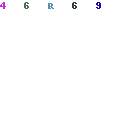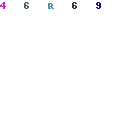Illustrator to discuss race, gender issues in animation for Black History Month

Samir Barrett, freelance illustrator, will discuss gender and race roles in animation this week for Black History month photo courtesy of Wells
Cartoons that influence children should cater to more than one type of child.
At least, according to Samir Barrett, a freelance illustrator who will present two days this week about these issues and other topics regarding mainstream animation.
“Cartoons are focused on basically boys. There’s a lot of different cartoons. The top or most common demographic that they cater to are Caucasian boys,” Barrett said. “For the most part when the characters are human they’re male and white.”
Black Studies Director Prince Wells said it is an exciting opportunity for many students, such as those majoring in mass communication or art and design.
Women’s Studies Director Catherine Seltzer said the program is delighted to work with the Black Studies Program in bringing Barrett to campus.
“We want to host more talks like this one, events that emphasize the ways that social injustice is almost never isolated to one component of identity–race, gender, economics, etc.–but rather exists in a complex web,” Seltzer said.
Studies in child development, according to Barrett, found Caucasian boys feeling more confident because they view animation characters they can relate to.
“They’re represented in a stronger light and larger variety of roles,” Barrett said. “When you have kids who look like them in a lot of different positions it gives them the message ‘I can be pretty much what I want to be.’”
Barrett said when non-Caucasians are portrayed, often they are side characters or villains, which “puts limits on [the children’s] viewpoint of [their] potential.”
From a gender perspective, females often serve as the girlfriend, love interest or mother supporting a male character verses “being more independent,” according to Barrett.
Barrett learned the Smurfette principle during his studies at Savannah College of Art and Design in Savannah, Ga. He said the term was coined by a New York Times article in 1991 about the comic and cartoon series, “The Smurfs.”
Smurfs are a race of male creatures who all have different personalities and one female whose personality is “the girl,” according to Barrett.
“The girl in the comic storyline has nothing to her character, created by villains to defeat the Smurfs by seducing and dividing them, she is then converted into a nice Smurfette,” Barrett said.
Disney’s movie “Frozen,” a comedy-adventure about a kingdom trapped in winter, also failed to represent ethnic diversity, according to Barrett.
“People defend ‘Frozen,’ [which was] set in Norway, as having in the past only whites,” Barrett said. “It was interesting that the kingdom was inviting all these people from around the globe for the celebration of the princess yet everyone pretty much looked the same—all Caucasian.”
Barrett said he has much respect for Disney, but believes the company can do better with its concepts.
But, according to Barrett, the quality of animation films are not necessarily related to the gender or race representations.
“All white or all-mixed doesn’t mean it’s good or bad,” Barrett said. “‘Wreck-It Ralph” was a really good movie. It would have been nicer if it had more diversity to appeal to different kids that were watching it.”
It is possible for children of all backgrounds to enjoy movies that only have white main characters, according to Barrett. It is also possible for children to enjoy movies with non-white characters. Barrett said “Avatar: The Legend of Korra,” a cartoon series on Nickelodeon is “a great example.”
Of the roughly 50 mainstream animated feature films released in the U.S. the past five years, Barrett said two movies: “The Princess and the Frog” featuring African-American characters, and “Up” featuring an Asian supporting character, had protagonists outside of Caucasian background.
Barrett said even though a lot of these issues are problematic, there are projects coming out that are going in the opposite direction, making it better.
“Steven Universe,” created by Rebecca Sugar, premiered last fall on the Cartoon Network. Her show’s characters range from “white, black, Indian, and more… really more of what we need.”
Barrett is illustrating a comic book that will be released by the company Future Dude Studios and co-created Mind Wave Comics, a superhero comic series.
Barrett’s first presentation, “Representation of Race and Gender in Animation” takes place Wednesday from noon – 1 p.m. at the Goshen Lounge in the Morris University Center. Afterward, from 2-3:15 p.m., Barrett will present at SIUE East St. Louis Charter School for high school students. His presentation “Ladies and Tokens: Diversity in Comics, Cartoons and Television” will take place Thursday from 12:30 – 1:45 p.m. at Peck Hall in room 1302.
Barrett’s presentations are co-sponsored by the Women’s Studies and Black Studies departments for Black History month.
For a sampling of Barrett’s animation works visit:
http://sketchmasterskillz.blogspot.com/p/animation.html
Filed Under: Black Studies • General CAS Stories • Women's Studies













